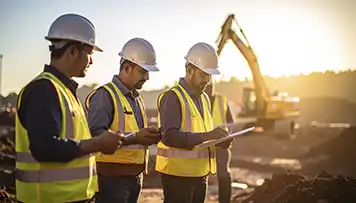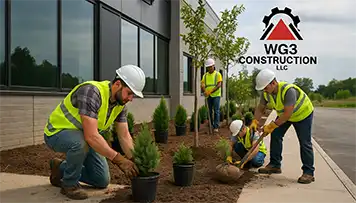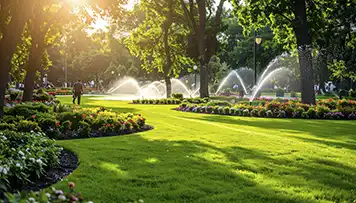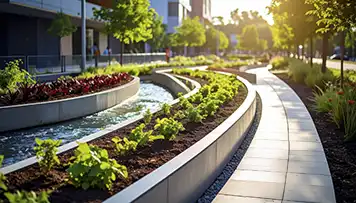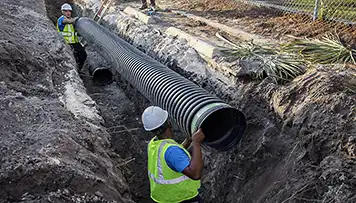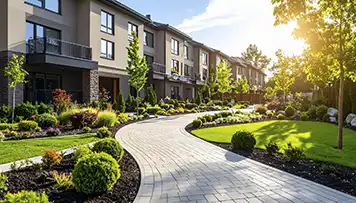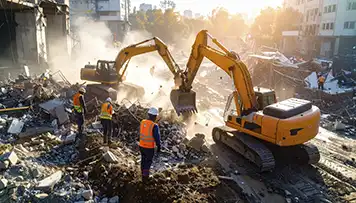FREQUENTLY ASKED QUESTIONS
Do you have questions?
We have answers!
Thousands of satisfied customers
-

-

-

-

-
+ 1
1. What is the typical sizes of commercial or civil projects?
Commercial Buildings (sq ft)
Small retail or office (e.g., strip mall unit, bank) | 1,000 – 5,000 sq ft
Standalone restaurant, gas station, fast food | 2,500 – 6,000 sq ft
Medical or dental clinic | 3,000 – 8,000 sq ft
Medium-sized retail (e.g., Dollar General, CVS) | 8,000 – 12,000 sq ft
Auto dealerships, larger clinics | 10,000 – 30,000 sq ft
Grocery store, supermarket | 25,000 – 50,000 sq ft
Large office buildings, warehouses, schools | 50,000 – 250,000+ sq ft
Big box retail (e.g., Walmart, Target) | 100,000 – 180,000 sq ft
Civil Projects (site development, utilities, grading)
Small commercial pad site (e.g., Chick-fil-A, Starbucks) | 0.7 – 1.4 acres
Retail strip center site | 2 – 3 acres
Mid-size development (e.g., hotel, grocery store + parking) | 3 – 6 acres
Full shopping center or business park | 6 – 25+ acres
Small retail or office (e.g., strip mall unit, bank) | 1,000 – 5,000 sq ft
Standalone restaurant, gas station, fast food | 2,500 – 6,000 sq ft
Medical or dental clinic | 3,000 – 8,000 sq ft
Medium-sized retail (e.g., Dollar General, CVS) | 8,000 – 12,000 sq ft
Auto dealerships, larger clinics | 10,000 – 30,000 sq ft
Grocery store, supermarket | 25,000 – 50,000 sq ft
Large office buildings, warehouses, schools | 50,000 – 250,000+ sq ft
Big box retail (e.g., Walmart, Target) | 100,000 – 180,000 sq ft
Civil Projects (site development, utilities, grading)
Small commercial pad site (e.g., Chick-fil-A, Starbucks) | 0.7 – 1.4 acres
Retail strip center site | 2 – 3 acres
Mid-size development (e.g., hotel, grocery store + parking) | 3 – 6 acres
Full shopping center or business park | 6 – 25+ acres
2. What is the difference between civil construction and commercial site development?
Civil construction services and commercial site development often overlap, but they are distinct areas of the construction process. Civil construction refers to the design, construction, and maintenance of infrastructure such as roads, drainage systems, utility installations, and earthworks. These services lay the foundational elements necessary for any type of building or public infrastructure to be functional and safe.
On the other hand, commercial site development focuses more specifically on preparing land for commercial buildings. This can include clearing, grading, soil stabilization, and installing preliminary utilities, such as sewer and water lines. Site development is usually the first major step in preparing a property for retail centers, office buildings, or other commercial uses.
Understanding this distinction is crucial when planning a commercial project. Working with a company that specializes in both civil construction and commercial site development ensures all foundational work is done correctly, meets local regulations, and supports long-term structural integrity.
Ready to start your next project? Request a quote or contact us today.
On the other hand, commercial site development focuses more specifically on preparing land for commercial buildings. This can include clearing, grading, soil stabilization, and installing preliminary utilities, such as sewer and water lines. Site development is usually the first major step in preparing a property for retail centers, office buildings, or other commercial uses.
Understanding this distinction is crucial when planning a commercial project. Working with a company that specializes in both civil construction and commercial site development ensures all foundational work is done correctly, meets local regulations, and supports long-term structural integrity.
Ready to start your next project? Request a quote or contact us today.
3. How does professional grading and site work affect long-term drainage and erosion control?
Proper grading and site work are essential to the success of any commercial construction project, particularly in areas with heavy rainfall or poor soil conditions. Grading and site work involve leveling or sloping the land to ensure optimal water runoff and support the structure’s foundation. These practices play a direct role in erosion control by preventing water from accumulating in undesirable areas and destabilizing the soil.
Effective site grading redirects water flow away from structures, sidewalks, and driveways, reducing the risk of flooding, foundation damage, and soil displacement. This process is especially critical in commercial projects where long-term maintenance costs and property value are heavily influenced by how well the site manages water.
When grading and erosion control are overlooked or improperly done, they can lead to costly repairs and regulatory issues. Choosing an experienced contractor like WG3 Construction that offers grading and erosion control solutions can ensure compliance with local ordinances and environmental standards.
Protect your investment— contact us for a site evaluation and quote.
Effective site grading redirects water flow away from structures, sidewalks, and driveways, reducing the risk of flooding, foundation damage, and soil displacement. This process is especially critical in commercial projects where long-term maintenance costs and property value are heavily influenced by how well the site manages water.
When grading and erosion control are overlooked or improperly done, they can lead to costly repairs and regulatory issues. Choosing an experienced contractor like WG3 Construction that offers grading and erosion control solutions can ensure compliance with local ordinances and environmental standards.
Protect your investment— contact us for a site evaluation and quote.
4. What are the most cost-effective erosion control methods for commercial properties?
Erosion control is an essential consideration for any commercial site development, especially in areas with heavy rainfall or slope instability. The most cost-effective erosion control solutions include silt fences, erosion control blankets, hydroseeding, and retaining walls. Each method serves a specific purpose based on your site’s terrain, soil composition, and proximity to water sources.
Silt fences and erosion blankets are ideal for temporary construction sites or locations where vegetation has been removed. Hydroseeding, which involves spraying a mixture of seed, mulch, and fertilizer, helps establish quick ground cover and reduce surface runoff. Retaining walls offer both functional and aesthetic benefits by preventing soil movement and defining landscape elevation changes.
Partnering with a contractor like WG3 Construction experienced in erosion control ensures that the right combination of methods is selected and installed efficiently. It also helps avoid fines or project delays due to non-compliance with municipal and environmental regulations.
Get the right erosion control plan for your project. Reach out for a free consultation.
Silt fences and erosion blankets are ideal for temporary construction sites or locations where vegetation has been removed. Hydroseeding, which involves spraying a mixture of seed, mulch, and fertilizer, helps establish quick ground cover and reduce surface runoff. Retaining walls offer both functional and aesthetic benefits by preventing soil movement and defining landscape elevation changes.
Partnering with a contractor like WG3 Construction experienced in erosion control ensures that the right combination of methods is selected and installed efficiently. It also helps avoid fines or project delays due to non-compliance with municipal and environmental regulations.
Get the right erosion control plan for your project. Reach out for a free consultation.

